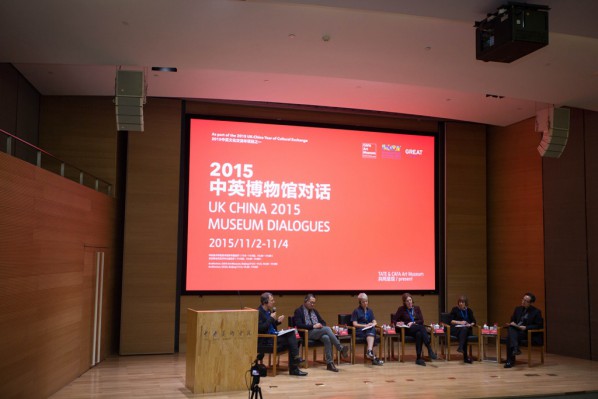
As part of the 2015 UK-China Year of Cultural Exchange, Tate Gallery and CAFA Art Museum jointly held the UK China 2015 Museum Dialogue and presented the first academic discussion on the role of the contemporary art museum, and the discussion directions included “What should an art institution do and who should it serve?”, “How to distribute the structure of power and the obligation?”, etc. The discussion was divided into two parts, in the first part, the leading professionals in the UK and Chinese art organizations started from the work experience of their art museums, to talk about the related respective thoughts on the role of the art museum.
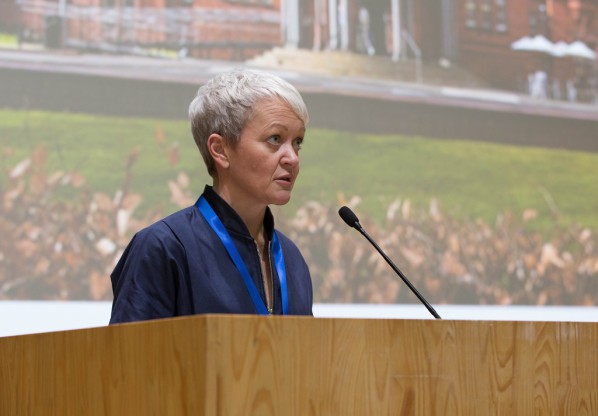
First of all, the Director of The Whitworth Maria Balshaw gave a speech. She said that art demanded both social subsidies and social participation. The Whitworth which belongs to the University of Manchester and is located in a park, so such a quiet and relaxed environment also reflects the purpose of The Whitworth in the public sphere, namely allowing the visiting audiences to feel comfortable. The Whitworth has both presented contemporary art and historical relics, while a show of wallpaper once made it very special. Finally Maria Balshaw summarized the speech with a reference to the words “The Whitworth makes you a better man” written by someone in the audience who participated in an event held by The Whitworth, and she said it was the highest praise for The Whitworth.
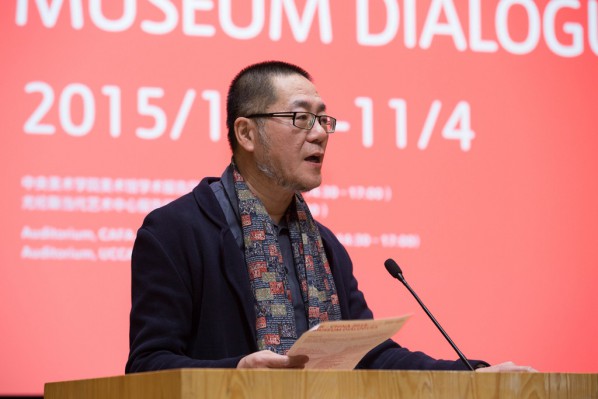
Then Director Wang Huangsheng gave a speech, starting from the common knowledge and cultural democracy to talk about the role of the art museum. He quoted the slogan “Everyone is an artist” promoted by Joseph Beuys and André Malraux’s definition of Cultural Democratization that allowed more people to be close to the work of art and spiritual products, and he listed the cases practiced by CAFA Art Museum, such as the section for the audience to participate in at “The Invisible Hand by CAFAM” exhibition. At the same time, Director Wang said that knowledge was a structure and a challenge with doubt and criticism in the existing knowledge, in order to constantly refactor. Art museums as producers of knowledge, through the display of collections, construct a narrative in art history, and he took the National Beiping Art School series of exhibitions of collections as an example. After comparing the efforts of public participation by the Chinese and Western art museums, Wang Huangsheng pointed out that Chinese art museums were still working on it. Finally he quoted a sentence by Joseph Beuys, “Happiness is lively, pain is also lively”, and he also hoped the activities of art museums were lively.
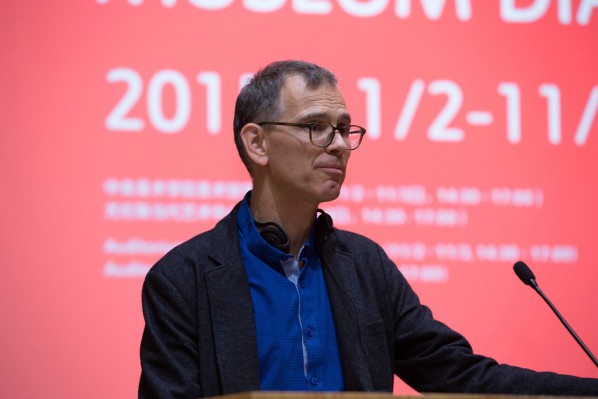
Different from the first two art museums which are closely linked with the schools, located in Albert Dock, Tate Liverpool in UK originally played a role in the renaissance of the city. Andrea Nixon from Tate Liverpool introduced that Tate Liverpool belonged to the Tate Group, and it was the second largest museum of modern and contemporary art in UK after the one in London. The exhibition was planned by the board of directors, Tate Liverpool showcased the works carefully by selecting from all over the world by the Tate Group. Under such a mode, how is it possible to coordinate the whole Tate Group, Andrea Nixon said, when Tate Liverpool was interested in an exhibition, Tate London might also be interested in the case, they would then think about a mutual cooperation, to mutually showcase the exhibition as a whole. In addition, the Tate Liverpool features massive family activities that are held in the space. The museum is in cooperation with local kindergartens, and they hold rich family activities every Sunday afternoon. They pay attention to the younger generations’ feedback on the art museum, and believe that the art museum should expect young people as it is the development direction of the future.

Victoria Pomery, Director of Turner Contemporary said the museum was initially built based on public funding, in order to promote the local culture. At the beginning, public participation was poor, but through the interaction between a series of exhibitions and the audience, now the visiting public has hit one million eight hundred thousand each year, both increasing local employment, and bringing economic development. Finally, Victoria Pomery said that the quality of life was the effective driving force to promote the development of art museums.
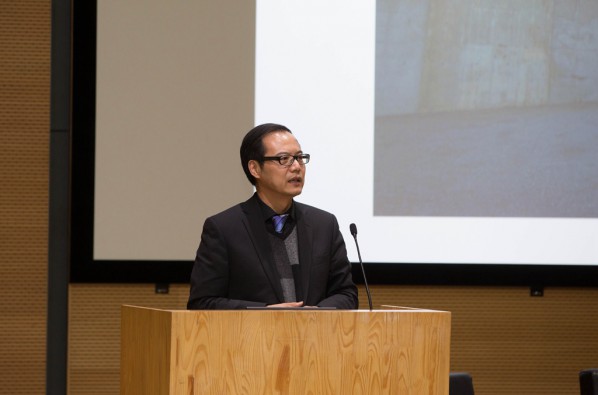
Then, Wang Chunchen from CAFA gave a speech and said that Today Art Museum had new publicity, which was embodied in the art museum’s writings of contemporary art history. In the past, people went to churches for teaching and experience, now art museums play the role of the dissemination of knowledge. Such new publicity was also reflected in art museums which should be supported and owned by society, servicing the connection between a variety of classes and organizations, so it should try to showcase the complete sequence of the development of art history in this exhibition.
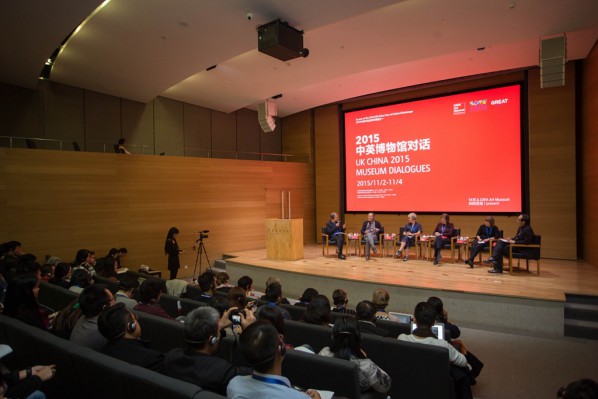
In the second part of the discussion, guests had a thorough communication and an interaction and discussion with the audience who were present at the discussion. The honored guests further interpreted the definition of “society” with the social role of art museums, as well as whether the public and private natures of art museums were on an equal footing, and the other related questions. In the Q & A section, a female audience pointed out an interesting phenomenon that all the participating directors from China were male while the three directors from the UK were female, so whether they would have different impressions when talking about the role of the art museum, which also brought some thoughts on the content of the discussion.
Text by Zhang Xinxin/CAFA Art Museum, translated by Chen Peihua and edited by Sue/CAFA ART INFO
Photo by Zhang Wenzhi and Zhang Chi/CAFA ART INFO
“UK China 2015 Museum Dialogues” On the first day · The roundtable
Time: November 2, 2015 in the morning
The Chinese participants (in alphabetical order by last name)Dong Bingfeng (OCAT Beijing Institute)
Gao Gao (CAFA Art Museum)
Larys Frogier (Rockbund Art Museum )
Li Qi (Rockbund Art Museum )
Ma Yung ( M+ )
Ouyang Xiao (OCAT Beijing Institute)
Pi Li( M+)
Wang Chunchen (CAFA Art Museum)
Wang Huangsheng (CAFA Art Museum)
May Xue UCCA )
Venus Lau (UCCA )
Lili Zhang (Power Station of Art )
The participants from the UKMaria Balshaw (Director, The Whitworth)
Alistair Hudson (Director, minna-Middlesbrough Institute of Art )
Victoria Pomery (Director, Turner Contemporary)
Zoe Dunbar (Chinese Centre for Contemporary Art, Manchester)
Karen Mackinnon (Director, Artes Mundi)
Andrea Nixon (Director, Tate Liverpool)
Frances Morris (Director of International Art, Tate)
Sook-kyung Lee (Asia Pacific Research Centre, Tate)
Marko Daniel (Public Programmes, Tate)
Judith Nesbitt (Director of National and International Programmes,Tate)
Jesse Ringham (Digital Marketing, Tate)
Courtesy of CAFA ART MUSEUM.




























